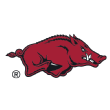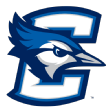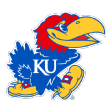Every March, the pressure grows stronger on what everyone at ESPN headquarters now refers to as simply The Streak. We are speaking, of course, of the 349 teams that won’t win the men’s basketball national title.
Yes, yes, it’s true. This venerable feature that selects eight teams of the 357 in Division I that could win the title has successfully included the eventual national champion every time. It’s not like we’ve been doing this since the 1950s — we started in 2016, actually — but still, a streak is a streak.
Here are the 349 teams that won’t win the 2021 national title, broken into three groups: ineligible, near misses and no clear path.
Are we clear? Let’s get started.
Ineligible (12 teams)
Alabama A&M Bulldogs
Alabama State Hornets
Arizona Wildcats
Auburn Tigers
Bellarmine Knights
Cal Baptist Lancers
Dixie State
Merrimack Warriors
North Alabama Lions
Tarleton Texas
UC San Diego Tritons
Stephen F. Austin Lumberjacks
Near misses (15 teams)

Right, so let’s dive right in with a curious choice, shall we? Arkansas has looked as good as any team in the country over the past few games, yet here they are named as a team that won’t win the title. Has there been some mistake here? Quite possibly. The streak is doomed to end sooner or later, and Eric Musselman has the team that could do the job. The only thing keeping the Razorbacks out of the magic eight is a slight reliance on their excellent rebounding to do much of the work on defense. Meanwhile, the Hogs’ SEC opponents have recorded average marks for shooting (on both sides of the arc) and for turnovers. The average marks in important categories kept Arkansas here, barely, in near miss territory. But, yes, putting a team that has won 10 of its past 11 here is definitely living dangerously.

The Bluejays look outstanding on paper, but even before the turmoil surrounding coach Greg McDermott’s racially insensitive remarks, the team seemed to lose a step late in the season. Indeed, it was McDermott’s displeasure with his team in a loss at previously struggling Xavier that brought about his appalling choice of wording. Perhaps we’ll look back on this in a week or two and regret classifying Creighton here, and maybe this will have blown over amid the excitement of a deep tournament run. (The team did look outstanding, for example, in thrashing Butler at home in the season finale.) At the moment, however, there’s too much uncertainty around Creighton for inclusion in the big eight.

There have been times this season when it was plain as day that the Seminoles would be tapped as one of the eight teams that could win the title. Indeed, the thing that people still (in March!) aren’t getting about this team is that Leonard Hamilton has a group of amazing shooters. Think of FSU as the Villanova of the ACC and you’ll be closer to the mark than the usual “long and athletic” riff. Florida State is absolutely long and athletic and, oh, by the way, the Seminoles will shoot you out of the gym. Alas, this also has been an inconsistent great-shooting team. Plus, let’s be honest, recency effect packs a punch. The last time we saw the Seminoles, they were losing at Notre Dame. So, yes, near miss.

Give Bill Self full credit: KU has come storming back after a lackluster start to the season. (This team was unranked at one point.) Now, the Jayhawks look pretty much like they always do: dangerous and headed for a really high seed. In particular, this was, easily, the best defense in the Big 12 in conference play. (Quite a feather in your cap when Baylor is in your league.) There’s no doubting this team’s ability to make opposing offenses suffer, but there are still questions attached to this offense. Self’s guys shot 33% on their 3-pointers in conference play, and, well, the “67 points in 67 possessions at home against UTEP” outing does make one hesitate before conferring high-eight honors.

The first thing to acknowledge is that Loyola Chicago is clearly going to the Final Four. After the series of three incredible, last-possession wins in a row in the 2018 NCAA tournament, we know better than to ever doubt the Ramblers. Still, once Loyola makes it that far, yet again, perhaps the opponent in the national semifinal will form a human wall around Cameron Krutwig and force his teammates to win with 3-point shots. It is not clear the Ramblers will be able to do so, after a season in which they connected just 33% of the time from beyond the arc in Missouri Valley play.

Yes, Ohio State was projected as a No. 1 seed for the better part of February, so, yes, this pick could go horribly awry. A recurring theme in these anguished comments is that, hey, keeping the charmed circle to just eight programs necessitates excluding some exceptionally strong teams. The Buckeyes’ strength is their offense. Duane Washington and Justin Ahrens get good 3-point looks against defenses preoccupied with stopping E.J. Liddell inside the arc. On the other side of the ball, however, OSU has not been as successful. Big Ten opponents ended their possessions with a shot attempt over 85% of the time, and against a team that doesn’t force a high number of misses, that matters.

The fact that Cade Cunningham is one of the best watches in college basketball this season shouldn’t be surprising, but it is. We have become accustomed to playmakers blessed with one-and-done talent who spend their brief shining hour in the college game demonstrating potential more than present-tense team-improving ability. Cunningham breaks that mold by involving his teammates, seeing the court with a practiced eye and making wise choices. Speaking of surprises, though, it’s a bit incongruous to find that an OSU offense led by such a talent notched just 1.03 points per possession in Big 12 play. (The Cowboys’ defense, conversely, is very good and too little noticed. Salute.)

The flat-out best thing about the streak of perfection ending for this feature this season would be if Purdue, in particular, won the national title. It would be worth it, in fact, to see Zach Edey cut down the nets while doing without the ladder entirely. No, truly, against Michigan State, he completed a nice alley-oop with an emphatic slam despite the fact that his feet barely left the floor. Edey is a pleasure to watch, and the Boilermakers’ defense is stout, but this offense shot 30.7% on 3s against the Big Ten.

Brian Dutcher’s program is 50-6 over the past two seasons, and for a second consecutive season, the Aztecs are getting the job done on defense. It’s easy to envision some snooty major conference team breaking into pieces when it runs up against this D, and that could well happen deep in an SDSU tournament run. Ultimately, however, it is both amazing and, for the purposes of this present exercise, problematic that a team with such a glittering track record also ranked No. 8 in Mountain West play this season for 2-point accuracy.

For one dazzling moment in January, Texas looked like a sure thing not to be here with the near miss teams. In the space of seven days, the Longhorns won road games against Kansas and West Virginia. The Big 12 office should have a special medal for any team that can pull off that twin bill. But then the trajectory appeared to change for UT. Since that victory in Morgantown, Shaka Smart’s group has gone 7-6. True, the example UConn set in 2011 makes us never say never after a middling January and February. We do say “seldom,” however, and Texas does not appear to be peaking at the moment.

The following are words we never thought would need to be said regarding a Chris Beard team, but here goes: This defense is better than it looks. The Big 12 for some inscrutable reason couldn’t miss on its 3s against the Red Raiders. Adjust that success rate downward to the mean and you’re looking at a pretty good defensive unit, one that forces both turnovers and misses in the paint. Throw in an offense that never turns over the ball and you have an excellent team — just not a member of the charmed top-eight circle.

Sadly, Villanova is not whole. Collin Gillespie was lost for the rest of the season due to a knee injury, and now it appears that Justin Moore will miss the Big East tournament with a severe ankle sprain. Ordinarily, one would hesitate before betting against a coach who has won two of the past four national titles. Indeed, it wouldn’t be a total shock if the Wildcats mustered a “next man up” credo and continued their ultra-low-turnover ways successfully enough to make the second weekend. Without Gillespie, however, near miss is where Villanova resides this time around.
The numbers might not be as elite as usual on defense, but Virginia is still capable of inflicting emotional damage on opposing offenses by forcing misses and taking you deep into the shot clock. No, we’re fine with the D. The deal breaker with this season’s Cavaliers on this list is simply that Tony Bennett’s guys don’t get up enough shots. This can be hard to spot in real time because the Hoos are so accurate in their shooting and take very good care of the ball. But the unmistakable turn toward extreme avoidance of all offensive rebounds is hitting this offense’s bottom line. Make that “unmistakable and surprising.” This program won a national title with high shot volume over the course of six NCAA tournament games. Those days, go figure, are gone or at least paused, it seems.

Conventional wisdom suggests West Virginia is better since Oscar Tshiebwe elected to transfer out of the program. “Better spacing,” they will tell you. That might be the case. We do know the Mountaineers are pretty darn good, and more specifically, this offense is excellent. But can we really be sure that the old version of West Virginia, the one that not only had the lead against Gonzaga at the half on Dec. 2 but actually had the Bulldogs visibly shook, wouldn’t have been just as good too? Anyway, this current team has an issue with opponents converting 2-point attempts, which Big 12 teams did nearly 53% of the time.

Lack of scoring. The reason Wisconsin is here with the near miss teams is due to a lack of scoring. Why this is the case is an excellent question. You’ve heard all the age comparisons about how these Badgers are older than some (very young) NBA teams. All that experience and continuity from last season was supposed to mean a team that was a little better than average in Big Ten play last season would be excellent on that side of the ball in 2021. It hasn’t happened, and in fact, Wisconsin ended conference play clocking in slightly below the league average for points per possession. A mystery yet to be solved.
No clear path (322 teams)
-
Bethune-Cookman Wildcats (inactive)
-
Brown Bears (inactive)
-
Chicago State Cougars (inactive)
-
Columbia Lions (inactive)
-
Cornell Big Red (inactive)
-
Dartmouth Big Green (inactive)
-
Harvard Crimson (inactive)
-
Howard Bison (inactive)
-
Maine Black Bears (inactive)
-
Maryland Eastern Shore Hawks (inactive)
-
Penn Quakers (inactive)
-
Princeton Tigers (inactive)
-
Yale Bulldogs (inactive)
Right, so by my count, that right there sums to 349 teams. If you’re a fan of a team that hasn’t shown up yet, congratulations! Your team is among the magic eight, which, as a simple matter of deduction, must consist of the following: Alabama, Baylor, Colorado, Gonzaga, Houston, Illinois, Iowa and Michigan.
Go out and make this feature look good, magic eight. There’s a streak on the line.


